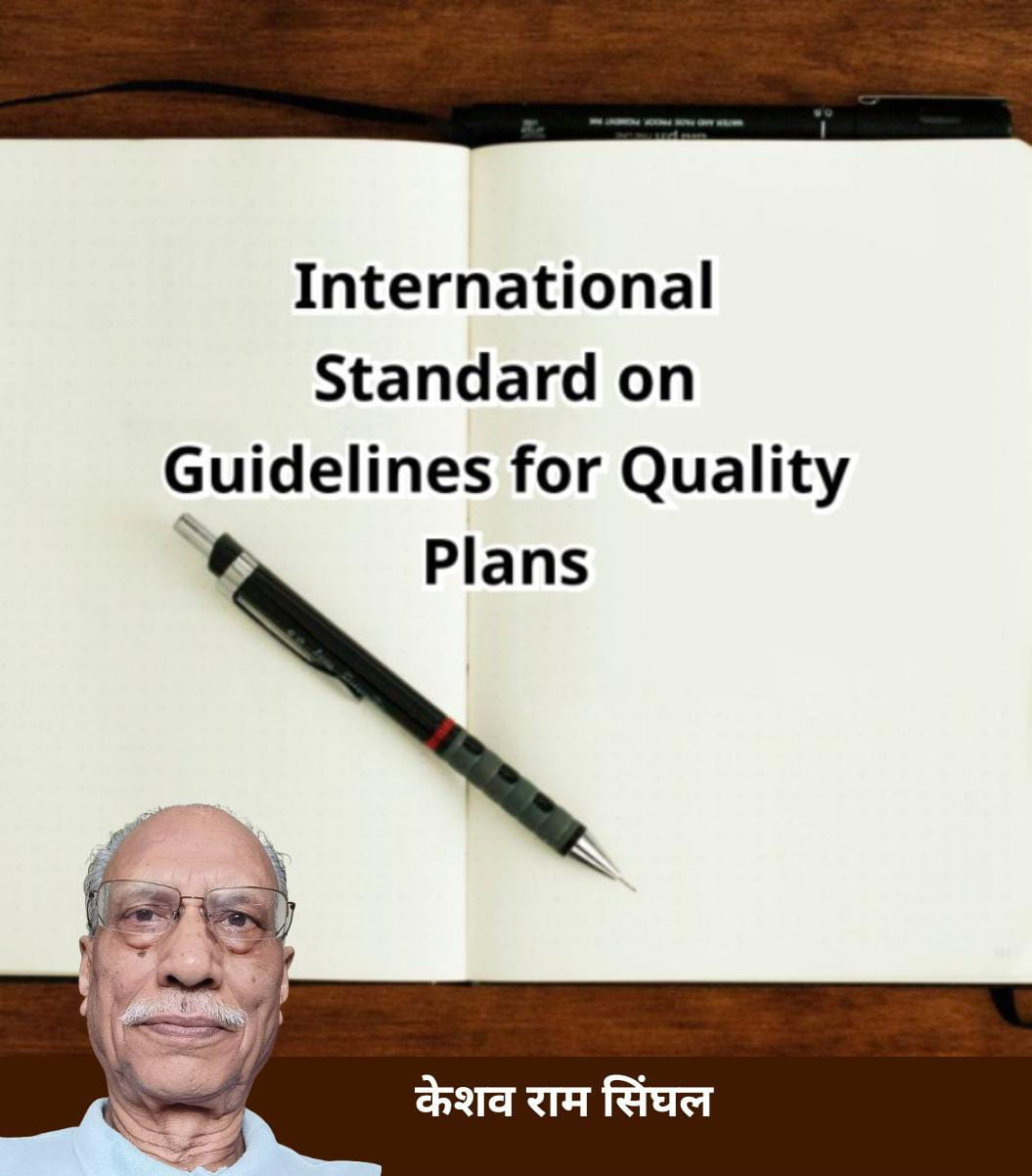International Standard on Guidelines for Quality Plans
A quality plan is documented information that specifies procedures (specific ways to carry out activities) and associated resources to be applied when and by whom to a specific object (entity or item). A quality plan is helpful in establishing and maintaining a quality management system and may result from quality planning. ISO 10005:2018 is an international standard, developed and published by the International Organization for Standardization (ISO), that provides guidelines for establishing, reviewing, accepting, applying, and revising quality plans as part of quality management. It applies to any organization, regardless of size or industry, and complements the requirements in ISO 9001. This guidelines standard was prepared by ISO Technical Committee ISO/TC 176, Quality management and quality assurance, Subcommittee SC 2, Quality systems. It is the third edition, replacing ISO 10005:2005, the previous second edition.
Purpose of Quality Plans
The ISO 10005:2018 standard outlines how quality plans can be used to translate quality management system requirements into specific objectives.
Structure of Quality Plans
The guidelines in ISO 10005:2018 recommend that quality plans address:
- The scope and objectives
- Responsibilities and authorities
- The resources needed
- The methods and processes for achieving quality
Planning Processes
The standard emphasizes risk-based thinking and the integration of quality planning with project or product management.
Customization
The quality plan should be tailored to the specific needs of the project, customer, or product.
Review and Revision
The ISO 10005:2018 standard encourages periodic reviews of the quality plan developed by an organization to ensure its continued suitability, adequacy, and effectiveness.
Documentation
Proper documentation is crucial for traceability, accountability, and communication within the organization and with stakeholders.
Contents of the Standard
The standard begins with a Foreword and Introduction, explaining key concepts and changes in terms used since the previous edition, including the process approach and risk-based thinking.
- Clause 1: Provides basic information on the scope.
- Clause 2: Details normative references, including the latest edition of ISO 9000:2015 (Quality management systems – Fundamentals and vocabulary).
- Clause 3: Defines terms and definitions for a better understanding of the standard.
- Clause 4: Summarizes the use of quality plans, including guidelines for requesting and managing external provider quality plans.
- Clause 5: Describes the process of developing a quality plan, including its context, inputs, defining its scope, and preparation.
- Clause 6: Outlines the typical contents of a quality plan, covering general guidelines, scope, inputs, quality objectives, responsibilities, control of documented information, resources, communication, design and development, externally provided processes, production and service provision, identification and traceability, property belonging to customers or external providers, preservation of outputs, control of nonconforming outputs, monitoring and measurement, and audits.
- Clause 7: Covers the operation and control of a quality plan, including review and acceptance, implementation and monitoring, revision, feedback, and improvement.
Annexes and Additional Resources
- Annex A: Provides examples of formats for quality plans.
- Annex B: Offers a schematic representation of a process approach applied to a quality plan.
- Annex C: Provides a correlation matrix between the clauses of this standard and those of ISO 9001:2015 (Quality management systems – Requirements).
- Annex D: Offers a correlation matrix between the clauses of this standard and the quality management principles from ISO 9000:2015 (Quality management systems – Fundamentals and vocabulary).
- Bibliography: Includes a list of relevant standards and resources.
ISO 10005:2018 helps organizations ensure that their quality management practices are systematically planned, applied, and monitored, aligning them with broader quality management goals.
Best wishes,
Keshav Ram Singhal

No comments:
Post a Comment